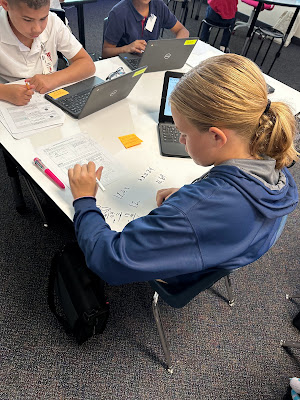In today's fast-paced world, traditional one-size-fits-all educational approaches need to be updated. Students have diverse needs, preferences, and learning paces, making it crucial for schools to adapt to this variability. Enter artificial intelligence (AI), a powerful tool that has the potential to revolutionize education by personalizing learning experiences for every student. Here is how AI can be harnessed to tailor education, ultimately fostering better engagement and knowledge retention learning to ownership.
Adaptive Learning Paths
Learning paths are paramount for students as they provide a structured and personalized roadmap for their educational journey. These paths guide students through their learning activities, ensuring that they receive content and challenges that match their competency levels. By tailoring the learning experience, students are more likely to remain engaged and motivated, which leads to better knowledge retention and a deeper understanding of the concepts. AI's ability to analyze student data, such as their learning history and performance, allows for creating adaptive learning paths. These paths can be fine-tuned based on each student's strengths and weaknesses, ensuring they receive content that challenges them just enough to stimulate learning without causing frustration.
Customized Content
Customizing content in the classroom is essential because it acknowledges the diversity among students and recognizes that a one-size-fits-all approach to education is no longer practical. When we personalize content to align with students' interests, backgrounds, and learning preferences, we create a more engaging and relevant learning experience. Customization fosters more profound connections between the subject matter and students' real-life experiences, making it more relatable and meaningful. It also enhances student motivation and enthusiasm for learning, which, in turn, leads to better comprehension and retention. One of the significant advantages of AI in education is its capacity to curate and deliver content that caters to individual preferences. With AI, teachers can select or create materials that align with students' interests, making the learning experience more engaging and relevant.
Real-time Feedback
Real-time feedback is critical to students as it offers immediate insights into their performance and understanding of the subject matter. Unlike traditional delayed feedback, which can lead to confusion and frustration, real-time feedback allows students to correct mistakes, clarify doubts, and adjust their approach instantly. This timely information helps students stay on track, maintain their motivation, and build a deeper understanding of the material as they progress. It also promotes a growth mindset by encouraging students to view mistakes as opportunities for improvement rather than failures. AI can provide students with instant feedback on their assignments and tests. This feature not only reduces the wait time for feedback but also offers personalized suggestions for improvement, helping students understand and rectify their mistakes effectively.
Learning Preference Adaptation
Student learning preferences matter significantly because they recognize the individuality and uniqueness of each student. People have different cognitive styles, strengths, and ways of processing information. By acknowledging and accommodating these preferences, educators can create a more inclusive and effective learning environment. When students are taught in ways that resonate with their learning preferences, they are more likely to be motivated, retain knowledge more effectively, and develop a deeper interest in the subject matter. AI systems can identify a student's preferred preference, whether it's visual, auditory, or kinesthetic. This knowledge enables the system to deliver content in a format that best suits the individual, optimizing their learning experience.
Time Management Assistance
Time management is a crucial competency for students. It equips them for life in ways that extend far beyond the classroom. Learning to manage time effectively helps students meet deadlines, self-regulate, balance their academic and personal lives, and reduce stress. It fosters discipline, responsibility, and a sense of control over their educational journey. AI-powered tools can help learners manage their time efficiently by providing schedules and reminders tailored to their coursework, helping them stay on top of their assignments, homework, and study goals.
Predictive Analytics
Predictive analytics holds immense importance in improving student learning as it harnesses the power of data to foresee potential challenges and opportunities for each student. By analyzing historical performance, behavior, and engagement data, educators and institutions can identify students who may be at risk of falling behind or those who may excel with additional challenges. AI can predict a student's future performance based on their past achievements and behaviors. This information can be used to offer early intervention for students at risk of falling behind, ensuring that they receive the necessary support to succeed.
Artificial intelligence holds the key to revolutionizing education by personalizing learning experiences. With adaptive learning paths, customized content, real-time feedback, learning preference adaptation, time management assistance, and predictive analytics, AI empowers educators to cater to the unique needs and preferences of each student. As AI technology continues to evolve, it promises a future where education is not just about transferring knowledge but also about fostering individual growth and success. By embracing AI in education, we can build a more inclusive and effective learning environment for all students, unlocking their full potential.








